The Fastest Way to Start a Blog & Make Money in 30 Days
Are you wondering if it’s possible to turn your passion into a profitable blog in just a month? With the right strategy, you can establish a legitimate online business and start earning money through blogging.
Despite common misconceptions that blogging is oversaturated, many individuals have successfully turned their blogs into income-generating platforms within their first month. This guide will provide you with a step-by-step roadmap on how to create valuable content and attract readers.
By following this guide, you’ll learn how to navigate the world of blog creation, avoid common pitfalls, and set realistic expectations for your online venture.
Key Takeaways
- Discover the potential of blogging as a legitimate online business opportunity.
- Learn how to create a profitable blog from scratch in 30 days.
- Understand the importance of high-quality content in attracting and retaining readers.
- Find out how to set realistic expectations for your blogging journey.
- Explore success stories of bloggers who started earning within their first month.
Why Starting a Blog in 2025 Is Still a Profitable Venture
Despite the ever-changing digital landscape, starting a blog in 2025 remains a lucrative opportunity for those willing to put in the effort. The world of blogging has evolved, but its potential for generating significant income is still very much alive. With the right strategy, dedication, and understanding of the current digital trends, new bloggers can carve out their niche and achieve success.
The Myth of Blogging Being Dead
The notion that blogging is dead has been a recurring theme in online discussions. However, this couldn’t be further from the truth. While it’s true that the blogging landscape has become more competitive, there are still numerous opportunities for new bloggers to make their mark. The key lies in identifying profitable niches, creating high-quality content, and leveraging the right marketing strategies.
Blogging has evolved, and so have the ways to monetize it. With the rise of new technologies and platforms, bloggers now have more tools at their disposal than ever before. This evolution has not diminished the potential of blogging; instead, it has opened up new avenues for creativity and income generation.
Real Success Stories from New Bloggers
There are countless stories of new bloggers achieving significant success within a short period. For instance, consider the story of a blogger who, within just four months of starting their blog, was earning an extra $1,000 every month. By the end of their first year, this figure had scaled to $5,000 a month. Such success stories are not anomalies but rather a testament to the potential that blogging offers.
These success stories often share common traits, such as a well-defined niche, consistent content creation, and effective marketing strategies. New bloggers can learn from these examples and apply similar principles to their own blogging journey.
What to Realistically Expect in Your First 30 Days
When starting a blog, it’s essential to set realistic expectations. In the first 30 days, the focus should be on building a solid foundation. This includes creating high-quality content, setting up the blog‘s design, and initiating marketing efforts.
| Milestone | Description | Timeframe |
|---|---|---|
| Setting up the blog | Registering a domain, choosing a hosting provider, and installing a theme. | 1-3 days |
| Creating initial content | Publishing the first few posts that define the blog’s niche and tone. | 1-2 weeks |
| Basic SEO setup | Optimizing content for search engines and setting up analytics. | 2-4 weeks |
For more detailed guidance on starting a blog in 2025, you can refer to resources like this comprehensive guide. By understanding what to expect and focusing on the right activities, new bloggers can set themselves up for success and lay the groundwork for future growth.
Preparing Your Blogging Mindset for Success
As you embark on your blogging journey, it’s crucial to prepare your mindset for the challenges and opportunities that lie ahead. A successful blogging experience starts with the right mental preparation.
Setting Realistic Goals and Expectations
Setting realistic goals is fundamental to your blogging success. Many new bloggers fall into the trap of expecting overnight success, but the reality is that building a successful blog takes time, effort, and perseverance. In your first 30 days, focus on laying a solid foundation rather than achieving immediate results.
Realistic expectations include creating quality content that resonates with your audience, gradually increasing your blog’s visibility, and starting to build a loyal readership. Understand that a lot of people start blogs, but only a fraction stick with it long enough to see significant results.
| Goal | Short-term (30 days) | Long-term (6 months) |
|---|---|---|
| Content Creation | Publish at least 10 high-quality posts | Maintain a consistent posting schedule |
| Audience Engagement | Start building an email list | Engage with readers through comments and social media |
| Traffic | Focus on SEO fundamentals | See noticeable increase in organic traffic |
Developing a Consistent Work Schedule
Consistency is key to blogging success. Developing a work schedule helps you stay on track and ensures that your blog remains active and engaging. Allocate specific times for writing, editing, and promoting your content.
By sticking to your schedule, you’ll be able to manage your time more effectively and make steady progress towards your blogging goals. It’s not about being perfect; it’s about being consistent.
Overcoming Common Beginner Fears and Doubts
Many new bloggers struggle with fears and doubts, from imposter syndrome to the fear of being judged. It’s normal to feel this way, but don’t let these fears hold you back. Recognize that everyone starts somewhere, and even experienced bloggers were once beginners.
To overcome these challenges, focus on your strengths, be open to learning, and remember that your unique voice and perspective are what will set your blog apart. With persistence and the right mindset, you can achieve your blogging goals and enjoy the process along the way.
Choosing Your Perfect Blog Niche
The niche you choose for your blog will significantly impact its success and your long-term satisfaction. Your blogging niche is more than just a topic you’re passionate about; it’s the foundation of your content strategy, audience engagement, and ultimately, your monetization potential.
As you start your blogging journey, it’s essential to understand that your niche might evolve over time. The truth is, your blogging niche will likely evolve as you grow and learn more about your audience. Don’t overthink this in the beginning; follow your genuine passion and what you think would be helpful for people.
How to Identify Profitable Niches in 2025
Identifying profitable niches in 2025 requires a combination of research, trend analysis, and understanding your target audience. To start, look for areas with a growing interest and a sizable audience. Use tools like Google Trends, Keyword Planner, and social media to gauge what’s currently popular and what’s on the rise.
Profitable niches often have a balance between demand and competition. You’re looking for areas with enough interest to generate significant traffic but not so much competition that it’s hard to stand out. Some profitable niches to consider include health and wellness, personal finance, technology, and lifestyle.

Balancing Passion with Profit Potential
When choosing a niche, it’s crucial to strike a balance between your passion and the niche’s profit potential. Blogging about something you’re passionate about makes the process more enjoyable and sustainable in the long run. However, it’s equally important to ensure that your chosen niche has the potential to generate income.
To achieve this balance, start by listing your areas of interest and expertise. Then, research the monetization potential of each niche using tools like Amazon Best Sellers, eBay, and affiliate networks. Look for niches with products or services that align with your content and have a demand in the market.
Researching Competition in Your Chosen Niche
Researching competition is a critical step before committing to a blogging niche. It helps you understand the landscape, identify gaps, and develop a unique value proposition. To analyze your competition, start by identifying the top blogs in your chosen niche using search engines and blog directories.
- Analyze their content quality, frequency of posting, and engagement levels.
- Examine their monetization strategies, such as affiliate marketing, sponsored content, or product sales.
- Look for gaps in their content that you can fill with your unique perspective or expertise.
- Assess their social media presence and how they interact with their audience.
By thoroughly researching your competition, you can refine your content strategy, identify opportunities to differentiate yourself, and create a competitive advantage in your chosen niche.
Selecting and Registering Your Domain Name
Your domain name is more than just an address; it’s the first impression of your blog. It’s a crucial element that can influence how your audience perceives your brand and affects your blog’s visibility in search engine results. Therefore, choosing a domain name that is memorable, easy to spell, and relevant to your niche is vital.
Tips for Creating a Memorable Blog Name
Creating a memorable blog name involves a combination of creativity and strategy. Keep it simple and easy to spell to ensure that your readers can easily find and remember your blog. Avoid using numbers or hyphens if possible, as they can complicate the memorability of your domain name. Consider using keywords related to your niche to improve search engine optimization (SEO). For instance, if your blog is about travel, incorporating words like “explore” or “wander” could be beneficial.
It’s also essential to ensure that your chosen name doesn’t infringe on any trademarks. You can check the availability of your desired domain name and trademark status using online tools. Brainstorming with friends or using domain name generators can also provide inspiration for a unique and memorable name.
Domain Registration Best Practices
Once you’ve chosen your domain name, the next step is to register it. Choose a reputable domain registrar that offers good customer service and competitive pricing. Popular registrars include GoDaddy, Namecheap, and Google Domains. When registering your domain, you’ll need to provide contact information, so be sure to use accurate details.
Consider registering your domain for multiple years to avoid the hassle of renewing it annually. Additionally, opt for privacy protection to keep your contact information private and reduce spam.
| Registrar | Price Range | Privacy Protection |
|---|---|---|
| GoDaddy | $10-$15/year | Yes |
| Namecheap | $8-$12/year | Yes |
| Google Domains | $12-$15/year | Yes |
What to Do If Your Preferred Domain Is Taken
If your preferred domain name is taken, don’t be discouraged. You can use domain name generators to find alternative names that are still relevant to your blog’s niche. Consider different domain extensions like .net, .co, or niche-specific extensions (e.g., .tech, .fashion).
Contacting the domain owner to purchase the domain is another option, though it can be costly. Modifying your desired name slightly, such as adding a relevant keyword, can also work. For example, if “myblog.com” is taken, you could try “mybloggingjourney.com” or “myblogtips.net.”

Setting Up Your Blog: Technical Steps
Now that you’ve chosen your niche and domain name, it’s time to set up your blog’s technical foundation. This involves several crucial steps that will ensure your blog is stable, secure, and ready for content creation.
Choosing the Right Web Hosting Provider
Selecting a reliable web hosting provider is a critical decision for your blog’s success. Your hosting provider will store your blog’s files, making them accessible to the public. When choosing a hosting provider, consider factors such as uptime, customer support, scalability, and pricing.
For new bloggers, it’s essential to opt for a hosting service that offers a balance between performance and affordability. Some popular options include Bluehost, SiteGround, and HostGator. These providers often offer WordPress-friendly hosting plans that simplify the setup process.
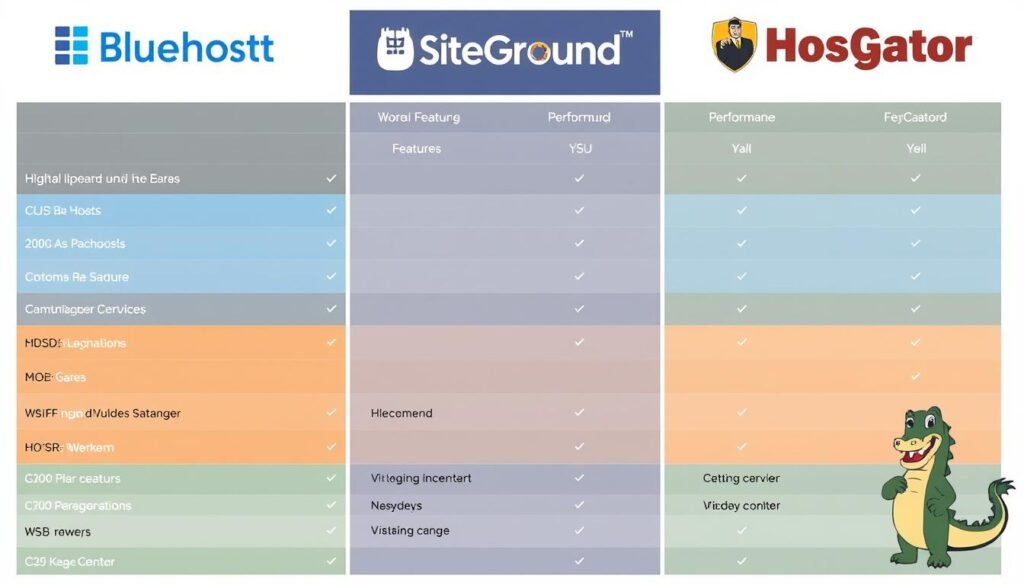
When evaluating hosting providers, look for features like one-click WordPress installations, free SSL certificates, and 24/7 customer support. These features can significantly simplify the hosting process and enhance your blog’s security.
Installing WordPress and Essential Plugins
Once you’ve selected your hosting provider, the next step is to install WordPress on your domain. Most hosting providers offer one-click WordPress installation, making this process straightforward.
After installing WordPress, you’ll need to install essential plugins to enhance your blog’s functionality. Plugins like Wordfence Security, Akismet, UpdraftPlus, EWWW Image Optimizer, and Pretty Links are considered must-haves for new bloggers. They provide security, spam protection, backup solutions, image optimization, and link management.
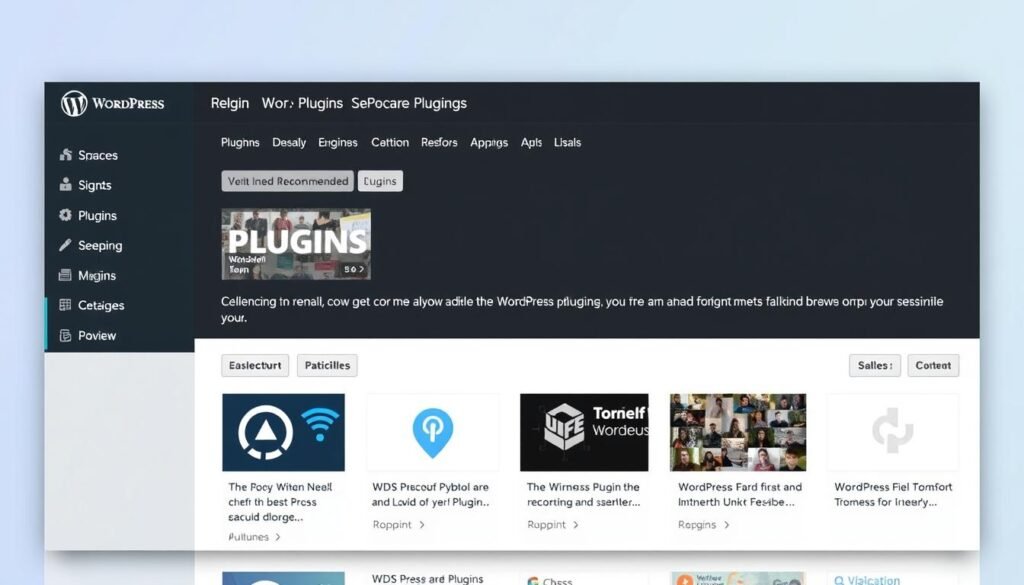
When selecting plugins, be mindful of the number you install, as too many can slow down your site. Focus on plugins that offer significant benefits and are regularly updated.
Securing Your Blog from Day One
Securing your blog is a critical step that should not be overlooked. From the outset, you need to protect your blog from common security threats such as hacking, malware, and spam.
Start by implementing strong passwords for your WordPress dashboard, hosting account, and domain registrar. Enable two-factor authentication whenever possible to add an extra layer of security.
Regular updates are also crucial. Keep your WordPress core, themes, and plugins up to date to prevent vulnerabilities. Use security plugins like Wordfence to monitor your blog’s security and protect against threats.
Additionally, ensure your hosting account and domain registrar are secure. Use strong passwords and consider enabling two-factor authentication for these accounts as well. Regular backups are also essential; use plugins like UpdraftPlus to automate this process.
Finally, installing an SSL certificate is vital for securing data transmitted between your blog and its visitors. Most hosting providers offer free SSL certificates through services like Let’s Encrypt.
Designing Your Blog for Maximum Impact
Creating a blog that resonates with your audience starts with a solid design foundation. Your blog’s design matters because it is that first impression of your brand. A well-designed blog can engage your readers, convey your message effectively, and keep visitors coming back.
Selecting a Professional WordPress Theme
Choosing the right WordPress theme is crucial for your blog’s success. For beginners, it’s essential to select a theme that is not only visually appealing but also user-friendly and responsive. When searching for the best WordPress themes for beginners, consider themes that offer simplicity, customization options, and compatibility with various plugins.
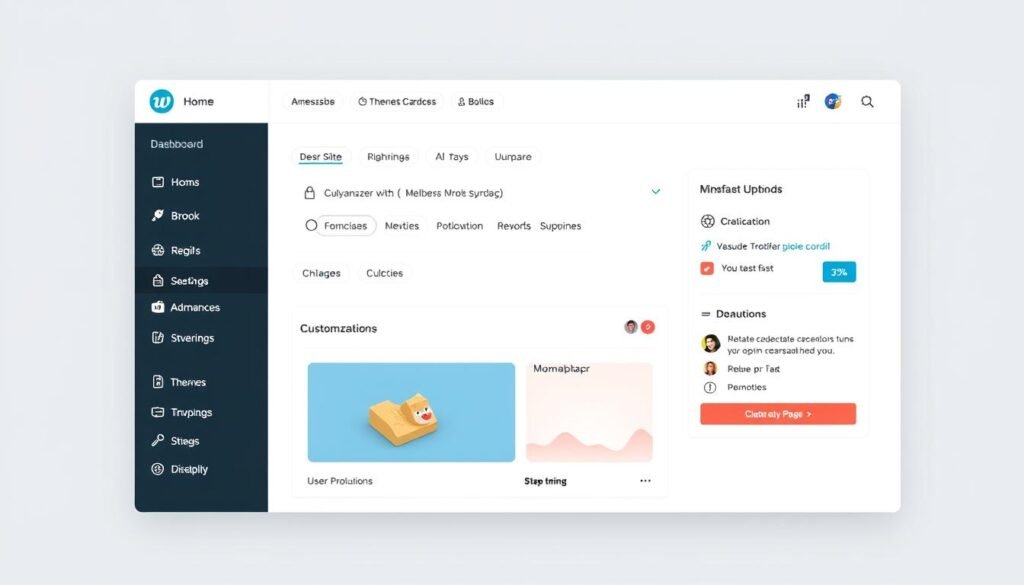
A good theme should be lightweight, ensuring your blog loads quickly, and should be compatible with the latest version of WordPress. Some popular themes for beginners include Astra, OceanWP, and GeneratePress, known for their ease of use and extensive customization capabilities.
Creating Essential Pages
Once you have selected your theme, it’s time to create essential pages that every blog needs. These include the About, Contact, and Privacy Policy pages. Your About page should tell your story, sharing why you started your blog and what readers can expect from your content. The Contact page should make it easy for readers to get in touch with you, including a contact form and your email address.
The Privacy Policy page is a legal requirement, informing readers about how you collect, use, and protect their data. While it may seem daunting, you can generate a Privacy Policy using online tools or consult with a legal professional to ensure compliance with relevant laws.
Optimizing Your Blog’s Mobile Experience
In 2025, mobile optimization is no longer a choice but a necessity. With the majority of internet users accessing websites through their mobile devices, a mobile-friendly blog is crucial for reaching your audience. Statistics show that over 60% of web traffic comes from mobile devices, and this number is expected to grow.
To ensure your blog is mobile-friendly, start by testing its responsiveness. You can use tools like Google’s Mobile-Friendly Test to identify issues. Key design considerations for mobile users include using a readable font size, placing important buttons within easy reach, and optimizing images and media for faster loading times.
Optimizing your blog’s mobile experience not only improves user engagement but also positively affects your SEO. Search engines like Google prioritize mobile-friendly websites in their search results, meaning a well-optimized blog can improve your search rankings and drive more traffic to your site.
Planning Your Content Strategy for the First 30 Days
A strategic content plan is the backbone of a successful blog, especially during the critical first 30 days. As you start your blogging journey, it’s essential to have a clear plan that outlines your content approach.
“Consistency is key when it comes to blogging,” as emphasized by many successful bloggers. To achieve this, you need to plan your content in advance. This is where a content calendar comes into play.
Creating a Content Calendar That Converts
A content calendar is a schedule of upcoming posts that helps you stay organized and ensures consistency. To create one, start by deciding on the frequency of your posts. As the saying goes, “Publish Consistent Content: Commit to posting at least one blog post per week and get yourself a content calendar (oh and stick to it lol).” This commitment helps in maintaining reader engagement and improving your blog’s visibility.
To create an effective content calendar, identify the topics you want to cover, the type of content (timely or evergreen), and the channels you’ll use to promote your posts. Tools like Google Calendar, Trello, or Asana can be invaluable in this process.

Identifying High-Value Topics for Your Audience
Understanding your audience is crucial in determining the topics that will resonate with them. High-value topics are those that provide significant value, whether through solving a problem, educating, or entertaining. To identify these topics, consider your niche, audience pain points, and what’s currently trending.
Researching your competition and engaging with your audience through comments or social media can also provide insights into what topics are in demand. By focusing on high-value topics, you can increase engagement and attract more traffic to your blog.
Balancing Timely vs. Evergreen Content
Your content strategy should include both timely and evergreen content. Timely content is relevant to current events or trends and can drive immediate traffic. However, it may lose relevance over time. On the other hand, evergreen content remains relevant and valuable over a long period, providing sustained traffic and SEO benefits.
A balanced approach involves creating a mix of both types. For instance, you can use timely content to capitalize on trends and evergreen content to build long-term value. Regularly updating evergreen content can keep it relevant, while repurposing timely content can make it more durable.
By understanding the role of each content type and planning accordingly, you can create a robust content strategy that drives traffic and engages your audience.
The Fastest Way to Start a Blog & Make Money in 30 Days: Your Action Plan
A well-crafted plan is essential for starting a blog and making money in just 30 days. To achieve this goal, you’ll need to focus on setting up your blog, creating high-quality content, generating traffic, and implementing effective monetization strategies.
Week 1: Setup and Foundation
In the first week, your primary focus should be on setting up your blog‘s foundation. This includes choosing a profitable niche, registering a domain name, and selecting a reliable web hosting service. It’s crucial to pick a niche that you’re passionate about and has the potential to generate money through various channels, such as affiliate marketing or display advertising.
Registering a domain name that’s easy to remember and relevant to your niche is vital. Use a registrar like GoDaddy or Namecheap to secure your domain. For web hosting, consider services like Bluehost or SiteGround, which offer affordable plans and good customer support.

Week 2: Content Creation and Optimization
During the second week, shift your focus to creating high-quality, engaging content for your blog. Develop a content calendar to plan your posts and ensure consistency. Your content should provide value to your readers and be optimized for search engines to improve visibility.
Use keyword research tools like Ahrefs or SEMrush to identify relevant keywords and phrases. Optimize your posts by including these keywords in your titles, headings, and meta descriptions. This will help improve your blog‘s search engine rankings and drive organic traffic.
Week 3: Traffic Generation Strategies
In the third week, concentrate on generating traffic to your blog. Leverage social media platforms like Facebook, Twitter, and Pinterest to promote your content. Engage with your audience by responding to comments and creating a community around your blog.
Additionally, explore other traffic generation strategies, such as guest blogging, collaborating with influencers, and using paid advertising on platforms like Google AdWords or Facebook Ads.
Week 4: Implementing Monetization Methods
In the final week, it’s time to implement monetization strategies on your blog. Start by applying for affiliate programs relevant to your niche, such as Amazon Associates or ShareASale. Once approved, you can promote products and earn commissions for each sale made through your unique affiliate link.
Consider displaying ads on your blog using Google AdSense or other ad networks. Create and promote your first digital product or service, such as an eBook or online course, to diversify your income streams. By the end of the month, you should have a solid foundation for making money from your blog.
Writing Blog Posts That Engage and Convert
In today’s fast-paced digital landscape, crafting blog posts that captivate and convert readers is more crucial than ever. With the ever-decreasing attention span of your audience, it’s essential to create content that is not only engaging but also easily digestible.
To achieve this, you need to focus on three key areas: crafting attention-grabbing headlines, structuring posts for readability and SEO, and using storytelling to connect with your readers.
Crafting Attention-Grabbing Headlines
Your headline is the first thing that potential readers see, and it can make or break their decision to click on your article. A well-crafted headline should be informative, yet enticing. It should provide a clear idea of what the post is about while also piquing the reader’s curiosity.
To create effective headlines, consider the following tips:
- Use action verbs and questions to create a sense of urgency or curiosity.
- Include relevant keywords to improve SEO.
- Keep it concise and clear, avoiding jargon or overly complex terms.
Structuring Posts for Readability and SEO
A well-structured blog post is crucial for both readability and SEO. Here are some key elements to consider:
| Element | Description | Importance |
|---|---|---|
| Headings | Break up content into sections | High |
| Bullet Points | List information clearly | Medium |
| White Space | Improve readability | High |
| Keyword Optimization | Improve SEO | High |
Using Storytelling to Connect with Readers
Storytelling is a powerful tool for connecting with your readers and building loyalty. By incorporating personal anecdotes or narratives into your blog posts, you can create an emotional connection with your audience.
To effectively use storytelling in your blog posts, consider the following framework:
- Identify the core message you want to convey.
- Find a personal story or anecdote that illustrates this message.
- Use vivid language and descriptive details to bring the story to life.
- Connect the story back to the main topic or takeaway.
By incorporating these techniques into your blog posts, you can create content that not only engages your readers but also converts them into loyal followers.
Building Your Email List from Day One
Building your email list from day one is crucial for turning your blog into a profitable business. As you start your blogging journey, having a loyal list of subscribers can significantly enhance your monetization efforts. In this section, we’ll explore the essential steps to build your email list effectively.
Setting Up Your Email Marketing Platform
To start building your email list, you need a reliable email marketing platform. Popular options include Mailchimp, ConvertKit, and AWeber. When choosing a platform, consider factors like ease of use, automation features, and integration with your blogging software.
For instance, ConvertKit is highly regarded among bloggers for its automation capabilities and user-friendly interface.
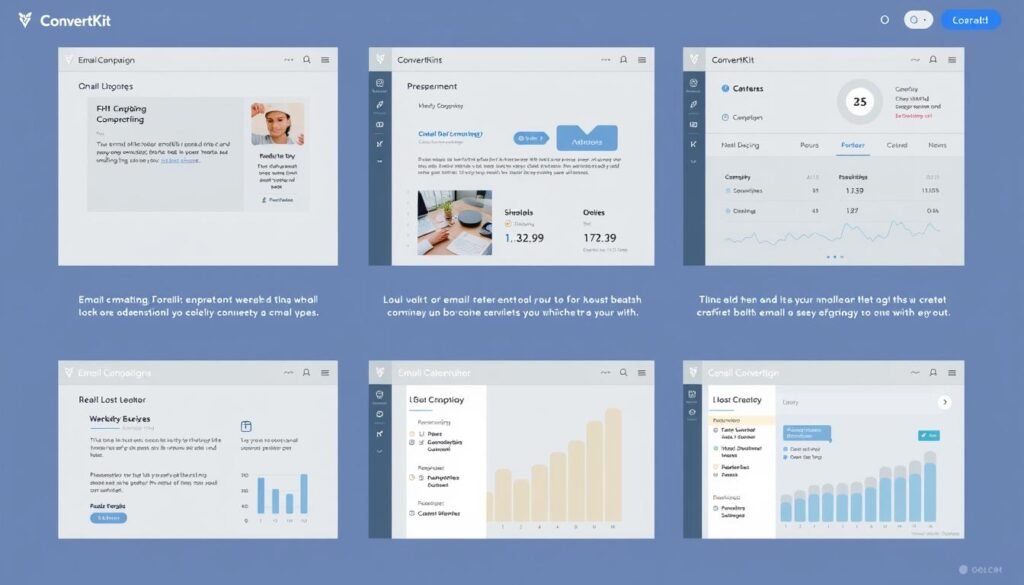
Kit is another excellent choice, as mentioned by successful bloggers who have seen significant growth in their email lists. “Start Building Your Email List: I use Kit and have been since the day I started my secret blog back in August of 2018.”
Creating Lead Magnets That Convert Visitors to Subscribers
A lead magnet is an incentive that encourages visitors to subscribe to your email list. It could be an eBook, a checklist, or a webinar. The key is to create something valuable and relevant to your audience.
For example, if you’re running a fitness blog, a lead magnet could be a free workout plan. Make sure it’s something that solves a problem or meets a need for your target audience.
Crafting Welcome Sequences That Build Trust
A well-crafted welcome sequence is vital for building trust with your new subscribers. It sets the tone for your email list and helps establish your authority in your niche.
A typical welcome sequence should consist of 5-7 emails, each with a specific purpose. Here’s a template you can follow:
- Email 1: Introduction and thank you
- Email 2: Provide value related to your lead magnet
- Email 3: Share a personal story or case study
- Email 4: Offer additional resources or tips
- Email 5: Soft promotion of your product or service
- Email 6: Engagement email asking for feedback
- Email 7: Final welcome email with a clear call-to-action
When crafting your welcome sequence, balance value and promotion. Focus on providing useful content in the initial emails and gradually introduce promotional material.
To automate your welcome sequence, use the automation features provided by your email marketing platform. This ensures that new subscribers receive your emails in a timely manner without manual intervention.
Tracking the performance of your welcome sequence is crucial. Monitor open rates, click-through rates, and conversion rates to identify areas for improvement.
Driving Traffic to Your New Blog
Once your blog is live, your focus should shift to strategies that drive traffic and engagement. With a solid foundation in place, you’re ready to attract and retain readers.
Pinterest Strategy for Rapid Traffic Growth
Pinterest can be a powerful tool for bloggers, offering a visually-driven platform to showcase your content and attract new readers. To leverage Pinterest effectively, start by creating high-quality, keyword-rich pin descriptions and using relevant hashtags.
For bloggers, Pinterest marketing tools can significantly streamline your workflow. Consider using tools like Tailwind or Canva to create and schedule your pins.
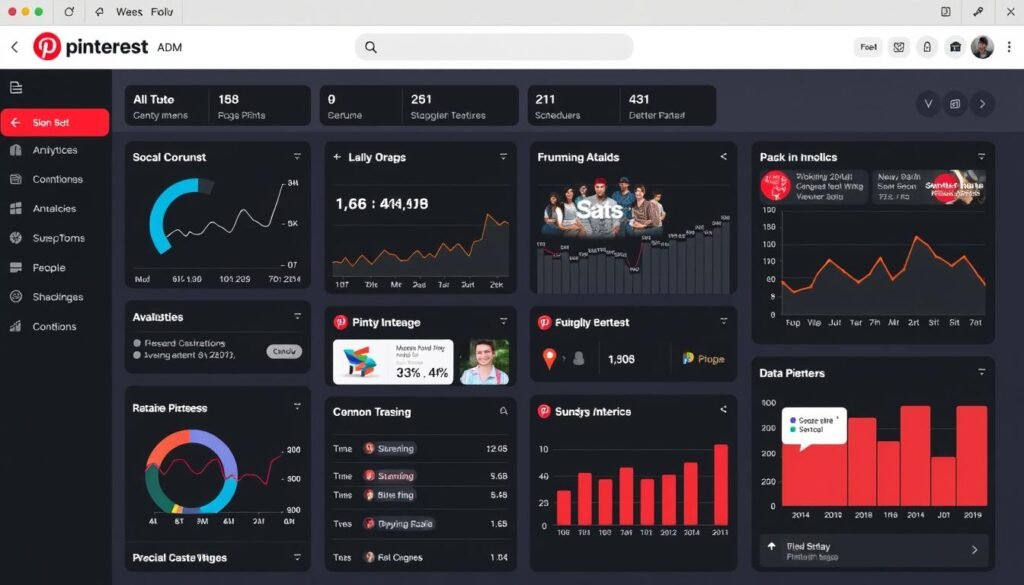
Leveraging Social Media Without Getting Overwhelmed
Social media can be daunting for new bloggers, but it doesn’t have to be. Focus on the platforms where your target audience is most active, and start with simple, consistent posting schedules.
To avoid feeling overwhelmed, prioritize quality over quantity. Share your blog posts, engage with your followers, and use relevant hashtags to increase your visibility.
SEO Fundamentals for New Bloggers
SEO might seem complex, but it’s essential for driving organic traffic to your blog. Start by focusing on creating authentic, story-based content that resonates with your readers.
For on-page SEO, ensure your blog posts include a clear title, meta description, and header tags. Don’t forget to optimize your images by using descriptive alt tags and file names that include your target keywords.
By implementing these SEO fundamentals and creating high-quality content, you’ll be well on your way to improving your blog’s search engine rankings and driving more traffic to your site.
Monetization Methods to Implement in Your First Month
With your blog set up, the next critical step is to implement monetization methods that can help you generate income within the first month. As you explore various strategies, it’s essential to focus on methods that align with your content and audience needs.
Affiliate Marketing for Beginners
Affiliate marketing is a popular and effective way to monetize your blog, especially for new bloggers. It involves promoting products or services from other companies and earning a commission on sales or referrals made through your unique affiliate link.
To get started, you’ll need to join affiliate programs that offer products relevant to your niche. Some of the best affiliate programs for new bloggers include:

Amazon Associates, ShareASale, and Commission Junction are popular choices, offering a wide range of products and competitive commission rates. When selecting an affiliate program, consider the payout structure, cookie duration, and the quality of products offered.
Display Advertising Options for New Blogs
Display advertising is another monetization method that can be implemented early on. By displaying ads on your blog, you can earn money based on the number of impressions or clicks.
Google AdSense is one of the most widely used display advertising platforms. It offers a simple way to integrate ads into your blog and earn revenue. To maximize your earnings, focus on creating high-quality content that attracts a significant amount of traffic.
Creating and Selling Your First Digital Product
Creating and selling digital products is a lucrative monetization strategy that can be implemented within your first month. Digital products like eBooks, templates, or online courses are not only profitable but also help establish your authority in your niche.
To create a successful digital product, start by identifying the needs of your audience. What problems are they trying to solve? What information are they seeking? By understanding your audience’s needs, you can develop a product that provides value and meets their expectations.
Some beginner-friendly digital product ideas include:
- eBooks on topics relevant to your niche
- Printable templates or planners
- Basic online courses teaching a skill or sharing knowledge
Once you’ve created your product, you’ll need to set up a system for selling it. Platforms like Shopify or Gumroad make it easy to sell digital products directly to your audience.
When pricing your digital product, consider the value it provides, the competition, and your target audience’s willingness to pay. A well-priced product, combined with effective marketing, can generate significant income.
Using AI Tools to Accelerate Your Blogging Success
With the advent of sophisticated AI tools, bloggers can now streamline their workflow and focus on creating high-quality content. AI is not here to replace human creativity but to augment it, making the blogging process more efficient and effective.
AI for Content Ideation and Research
AI tools can significantly aid in generating content ideas and conducting research. For instance, tools like ChatGPT and Content Blossom can help brainstorm topics based on trending keywords and audience interests.
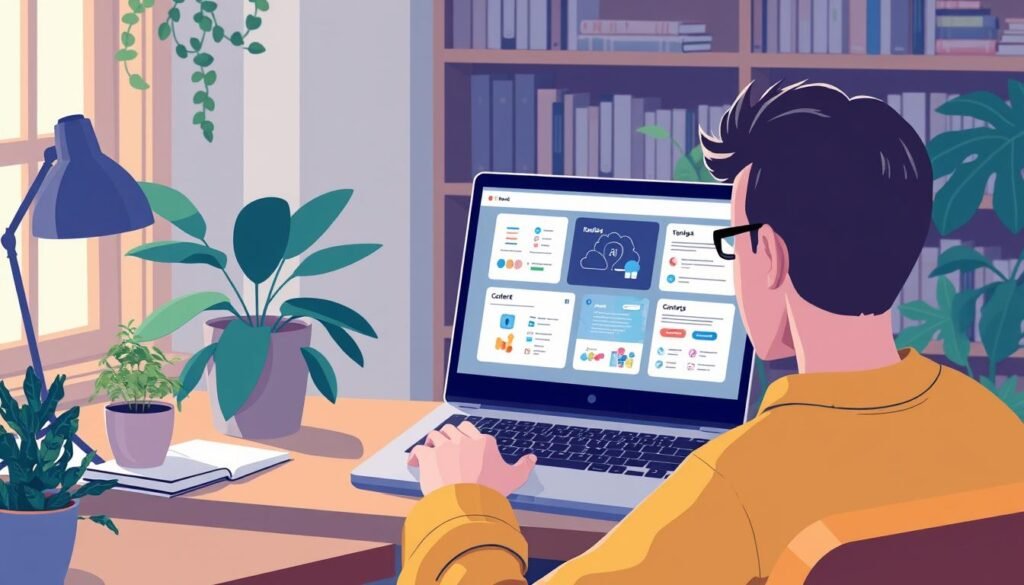
These tools analyze vast amounts of data to suggest relevant and engaging topics, saving time and sparking creativity.
Balancing AI Assistance with Authentic Voice
While AI can assist with content creation, it’s crucial to maintain an authentic voice. Google’s algorithm prioritizes human-written, story-based content, making it essential to balance AI assistance with personal touch.
The key is to use AI as a tool, not a replacement for human creativity. By doing so, bloggers can ensure their content remains engaging and relatable.
AI for Content Repurposing and Promotion
AI can also help in repurposing blog content across different platforms. For example, a blog post can be transformed into social media content, email newsletters, or even video scripts using AI tools.
Tools like Lumen5 and Rev.com specialize in converting blog posts into video content and transcripts, expanding the reach of your blog.
By repurposing content, bloggers can maximize their efforts, reaching a wider audience without creating new content from scratch.
Tracking Your Progress and Making Adjustments
Understanding your blog’s performance is the first step towards making informed decisions to improve it. As you start your blogging journey, it’s essential to monitor your progress closely to identify areas that need adjustment.
Essential Analytics to Monitor
To effectively track your blog’s performance, you need to focus on key analytics. These include page views, unique visitors, bounce rate, average session duration, and conversion rates. Page views give you an idea of your blog’s overall popularity, while unique visitors help you understand how many different people are visiting your site.
Monitoring your bounce rate and average session duration can provide insights into how engaging your content is. A high bounce rate might indicate that your content isn’t meeting the expectations of your visitors, while a longer average session duration suggests that your content is engaging.
| Metric | Description | Why It Matters |
|---|---|---|
| Page Views | Total number of pages viewed on your blog | Indicates overall popularity and traffic |
| Unique Visitors | Number of different people visiting your blog | Helps understand the reach of your blog |
| Bounce Rate | Percentage of visitors who leave after one page | Indicates content relevance and engagement |
Interpreting Data to Improve Performance
Once you have the data, the next step is to interpret it to make informed decisions. For instance, if you notice a high bounce rate, you might need to adjust your content to better match what your audience is looking for. Similarly, if your average session duration is low, it might be a sign that your content isn’t as engaging as it could be.
Using analytics tools, you can also track the performance of individual posts and categories, helping you refine your content strategy over time. By regularly reviewing your analytics, you can identify trends and patterns that inform your blogging decisions.
When and How to Pivot Your Strategy
Pivoting your blogging strategy is sometimes necessary when your current approach isn’t yielding the desired results. Signs that it’s time to pivot include stagnant or declining traffic, low engagement, or a mismatch between your content and your target audience’s interests.
To pivot effectively, start by conducting a thorough blog audit to identify areas for improvement. This might involve adjusting your niche, refining your content strategy, or exploring new monetization methods. When making significant changes, it’s crucial to communicate with your audience to maintain their trust and engagement.
By continuously monitoring your blog’s performance and being willing to make adjustments, you can improve your chances of success in the competitive world of blogging.
Common Pitfalls New Bloggers Face and How to Avoid Them
As you embark on your blogging journey, it’s crucial to be aware of the common pitfalls that many new bloggers face. Understanding these challenges can help you navigate your path to success more effectively. Blogging, while rewarding, comes with its set of obstacles that can deter progress if not addressed properly.
Perfectionism and Analysis Paralysis
One of the significant hurdles new bloggers encounter is perfectionism, which can lead to analysis paralysis. The desire to create the perfect blog post or to have the ideal blog setup can prevent you from taking action. This perfectionism can stem from fear of failure or fear of not meeting others’ expectations.
To overcome this, it’s essential to understand that your blog will evolve over time. Starting is more important than perfecting. Focus on creating valuable content and improving gradually. Remember, your first blog post won’t be your last; it’s a starting point.
Inconsistency and Lack of Focus
Inconsistency is another pitfall that can hinder your blogging success. Regularly posting high-quality content is crucial for engaging your audience and improving your search engine rankings. Without a consistent schedule, your readers may lose interest, and your blog’s growth can stagnate.
To maintain consistency, create a content calendar that outlines your posting schedule. This tool will help you plan and organize your content in advance, ensuring that you stay on track. Additionally, focusing on a specific niche helps maintain direction and coherence in your blogging efforts.
Unrealistic Expectations About Income
Many new bloggers have unrealistic expectations about the income they can generate from their blogs. The truth is, making significant money from blogging takes time, effort, and a well-thought-out strategy. It’s unrealistic to expect to make $10,000 in your first month of blogging.
Understanding that blogging is a long-term game is crucial. It requires patience, especially when it comes to monetization. Setting realistic income goals based on your niche, audience engagement, and monetization strategies will help you stay motivated and track your progress effectively.
To set realistic expectations, consider the typical income progression for blogs in your niche. For instance, some niches may generate income faster due to higher demand and affiliate opportunities. Understanding “blogging seasons” and how income can fluctuate throughout the year can also help you plan better.
Conclusion: Your Roadmap to Blogging Success Beyond 30 Days
The journey to a successful blog doesn’t end after 30 days; it’s just the starting point for long-term growth and profitability. You’ve taken the crucial first steps by setting up your blog, creating content, and implementing initial monetization strategies. Now, it’s time to focus on scaling your online presence and turning your blog into a sustainable business.
As you move beyond the first 30 days, your focus should shift to refining your content strategy, expanding your audience, and diversifying your income streams. Persistence and adaptation will be key to your long-term success. Continuously analyze your performance, adjust your strategies as needed, and stay committed to your goals.
The potential rewards of a successful blog are significant, including financial independence and the freedom to work on your own terms. To achieve these benefits, stay motivated by celebrating small wins, learning from setbacks, and keeping your long-term vision in mind. Take immediate action on the steps outlined in this guide, and you’ll be well on your journey to making money through your blogging efforts.
Start your blogging journey today, and set yourself up for success in the months and years to come.
FAQ
What are the most profitable niches for blogging in 2025?
How do I choose a domain name for my blog?
What is the best web hosting provider for beginners?
How often should I post content on my blog?
What are some effective ways to drive traffic to my new blog?
How can I monetize my blog in the first month?
What are some common mistakes new bloggers make?
How do I track my blog’s performance?
Can I use AI tools to help with my blogging?
editor's pick
latest video
news via inbox
Nulla turp dis cursus. Integer liberos euismod pretium faucibua




